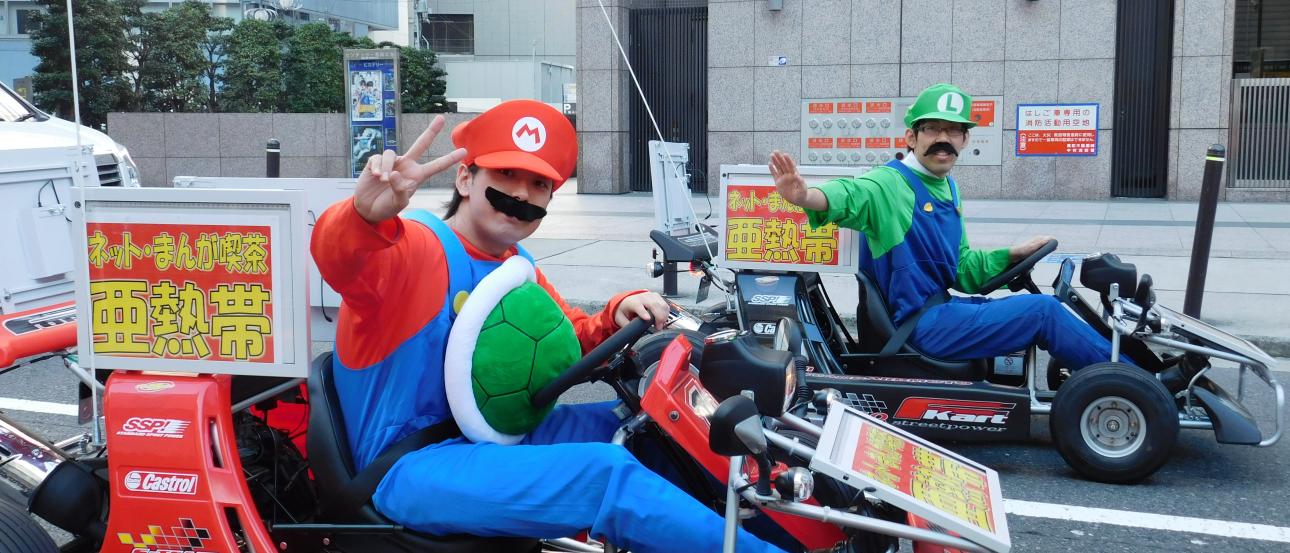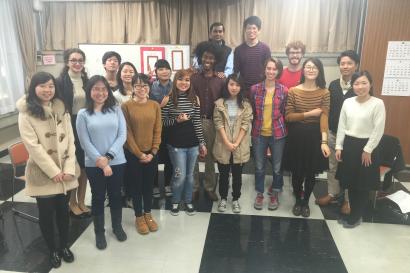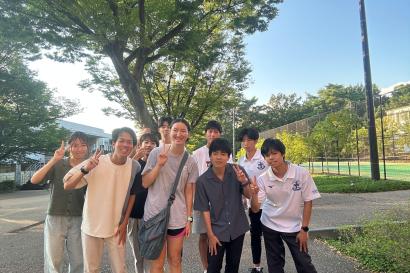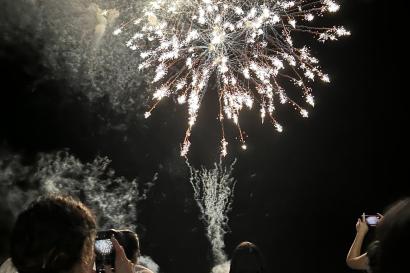Back again, your favorite afro blogger live from the good 'ol land of 日本. As you can tell, Japanese class is going pretty well (or if you can read kanji, maybe can't tell since all I've used so far is fairly simple kanji). Anyway, this time around I will once again be skipping the weekend adventures and be blogging about personal opinion and observations. I decided for this one I'd fill everyone in on some of the specific things I have noticed about Japan that I had to adjust to, am still trying to adjust to, or a few I consider impossible to adjust to until I return to this beautiful country next time, whenever that may be.
So, here's a few things that were a bit strange upon initially arriving here, but I have since gotten fairly comfortable with.
1. Lack of paper towels/napkins in public places, namely restrooms.
Well, prior to arriving to Japan I read multiple blog posts about Japanese culture and avoiding culture shock and all that good stuff. I do remember reading something about the bathrooms being completely hands-free, however, I don't remember seeing anything about lack of paper towels. And I know what you're thinking, no paper towels big deal, they have hands-free dryers. Welp... no. Although, of course, there are bathrooms with hands-free dryers, a lot do not. The same ones that do not, also have no paper towels. For about a week and a half I struggled with washing my hands in bathrooms and walking out with still damp hands. Alas, no worries! I found the reason for this is the fact that 98% of Japanese keep a handkerchief with them at all times. A cheap and sensible solution to this problem for a large number of foreigners.
2. Lack of trash cans on the street.
With Japan being such a walker-friendly society, some may find it strange that will not spot one trash can over the span of a hearty 30 minute walk. Though, there are a large number of recycle bins, general trash cans are not found anywhere on the street. Surprisingly, at least to me, the effect of this lack of seemingly necessary public conveniences is an amazingly clean sidewalk and city. I'm sure all of the Americans are asking how is the street CLEANER if there are ZERO trash cans? Well, that is because Japanese people, for the most part, do not eat/drink and walk at the same time. This is partly because of the fact there are no trash cans, thus eating and walking down the street is generally frowned upon by the general public.
3. Infinite vending machines.
So far I have just been talking about all of the things Japan doesn't have, so if you were looking for something that would appeal to your idea of convenience, here you go. Vending machines. A bunch of them. Like, at least 2-4 for every 2 city blocks. The majority of vending machines is also accompanied with somewhere between 1 and 3 recycling bins. So, when you get a drink from the machine you can toss it out without walking too far. Although most vending machines contain only one specific type of product, overall their contents range from sodas to hot and cold coffee to snacks and candy to just-add-water soba and ramen bowls.
4. Danger! Oncoming traffic.
Yea... if you drive on the right side of the road in your home country, it is opposite in Japan. Not sure how many other places that applies to other than the US but yes, so please be careful. I thankfully have not been in a near hit situation but I did have multiple mini-heart attacks my first week here when I thought I saw cars driving down the wrong side of the street. Took a while, but yes, I have gotten used to it.
5. Manners at home and at the table. いただきます!ごちそうさま!行ってきます!お帰り!
Another thing it might be hard for a large number of Americans to grasp if they decide to come to Japan, table manners! Ha! Just kidding... yea. But yes, table manners are very much expected by every member of society, at home and in public. "Itadakimasu!" should be used at the beginning of every meal that is offered to you, it is roughly translated to "I accept your food/drink offer". Although, it is more loosely understood somewhat like the French "Bon apetit!" (at least that's how I think of it). "Gotisoosama desita" is used at the conclusion of every meal, and this means something like "It was a feast!".
Home manners are also important if ever staying with a native Japanese person for any amount of time. If you ever leave the house and plan to return, you should say "Itte kimasu" (roughly: I'm stepping out) and upon returning, "Tadaima!" (I'm home!). The proper responses to these (if someone else in the house leaves while you are there, "Itterashyia!" (Please return safely!) and "Okaeri nasai!" (Welcome home!), respectively. And also don't forget, TAKE OFF YOUR SHOES. I'M PRETTY POSITIVE THERE IS NO HOUSEHOLD IN JAPAN THAT ALLOWS SHOES PAST THE SPACE IMMEDIATELY AFTER THE FRONT DOOR.
Well, I think this post is getting fairly long so I'll just sum up the things I'm still adapting to or don't necessarily see being adapted to this time around.
1. Small drink portions, like really small. 5 sips maximum. (Most Japanese eat their meals initially, then finish it with a large gulp of their drink, normally tea or water. I am completely incapable of doing this and tend to reach for my drink every couple of bites.)
2. Lots of courses in a traditional Japanese meal, but typically very light food. (Consequently, Japanese people consider American foods to be extremely heavy and filling, even in small portions)
3. Staring at people is not really considered rude, as it often is in the US. I have partly gotten used to this, completely understanding that seeing a black guy with a huge afro walk down the street is a spectacle for most Japanese. Alas, at times it can still be a bit unsettling after 10 seconds or so of being intensely stared down.
4. Extremely independent children. This one may sound crazy and initially I couldn't believe my eyes, but I have since gotten fairly used to it though I'm still working on not dedicating time to every lone child I pass. Considering the safety of this country, though, I am no longer completely off-put by it. But yes, Japanese children are taught to be very independent at what most American parents would consider a scary young age. I am indeed referring to children sometimes as young as 6 yrs. old riding the subway alone, running errands, or walking to school. Of course, I have rarely seen this at night, but still it was a crazy thing to see in my personal opinion. Don't get me wrong though, from what I have seen these children are extremely capable of navigating around and getting where they need to go, and of course they know they can call on any person of the community to help them if they should need it.
Welp, that's all I got for this one. Hope this helps anybody considering visiting Japan, either for study abroad, work or vacation. Don't forget to check in for my next blog post, it'll be filled with lots of good photos and exciting stories and adventures! And I appreciate you if you took the time to read through this entire post which I'm sure seemed like a huge task initially seeing this extreme bulk of text. じゃ、またね!









